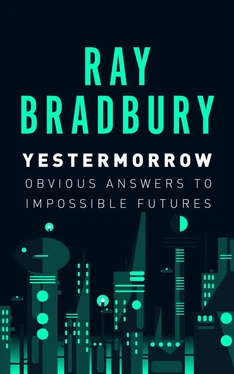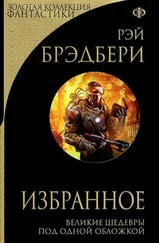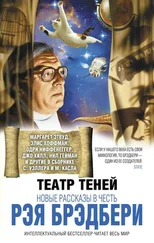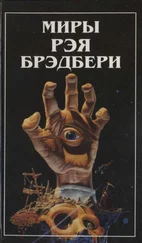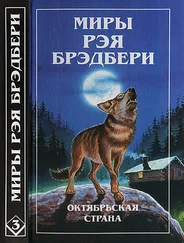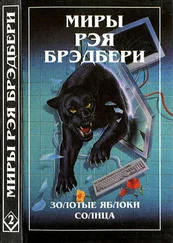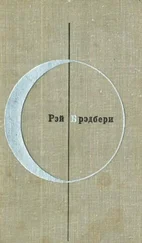A Storm Maze, where, amongst hills and mountaintops we watch the Weather of the World being formed and sent out in raving hurricanes and dreadful lightning winds, clamoring about us as we watch and listen.
A Maze of Shadows and Sounds where we wander in the voices of 1920 and 1030 and the musics of 1910 and 1039, and with shadow puppets and shadow marionettes rising and flying and falling all about us… and so on and so forth and so on and on and… on. Name Your Poison … We’ll Build It!
* * *
Had enough? Hold on! Let’s move out into the final, the Third Time Maze!
And what is it?
After Time Maze One, the restaurants, and Time Maze Two, the Wild Adventures, we now have time for —Shopping!
Getting lost for the third time!!! In a maze of Shops From All Ages, from the Past, the Present, and the Future.
Everything we remember from eating, everything we remember from Living in the past few hours, we now apply to the adventure of shopping and taking home remembrances of the two first Maze experiences.
So, at our leisure, remembering all this, we shop, we buy, we take home bits of London, Dublin, Pre-History, Far Centauri. We wander in a Maze of shopping even as we wandered in a maze of eating and wild journeyings.
A veritable museum of shops is here, a Maze attached to a Maze attached to a Maze…
So we now enter the Great Victoria, East India and Far Orient Book Shoppe, where we find a solid escarpment, a vast cliff of books reaching up, up, up into the intellectual heavens about us, on three grand layers. It is probably the longest bookstore on Earth, stretching for as far as the eye can see! This, accomplished, of course, by the fact that the bookstore not only runs for some 90- to 100-feet-deep, but when it reaches the far terminus of reality, is taken up by a trompe l’oeil painting of the same stacks, which stretch off towards what might be Bombay, could be Tokyo, are most certainly leaning toward Shangri-La.
Similarly, looking up, the stacks that neatly climb the escarpment, continue on into the heavens as far as the eye can see in that direction! Endless ladders and rungs of books to be climbed by bright, seeking apefolks—us!
What calls us there? On occasions, shadows of trees and monkeys scurrying from branch to branch, limb to leaf, in soft chattering excursions, along with the faint echo of Tarzan summoning us—high!
Or, on occasion, Apollo’s chariot may pass over that endless heaven, followed in good time, by an image of Ra, a Persian god of fire, or a flying carpet. Surprise-surprise-surprise—a flock of birds heading south—clouds moving north—bombers on their way to a war—rockets taking off for Far Centauri—all projected on that imaginative sky.
At either end of the bookstore is a circular stairway up which we can ascend to the three levels. Perhaps the children’s level is at the very top?… For wouldn’t children, above all, wish to climb circular stairs more than anyone else? And, anyway, up there Tom Swift and Nancy Drew and Buck Rogers and Tarzan and Mary Poppins would be calling (softly, please) with rocket voices and the muted clamor of space wars. Perhaps the top floor would also be inhabited by the science fiction and fantasy books, where the still young humans come—from age fourteen to twenty-four or thirty. Again, motivation is important here and s-f/fantasy is read by climbers, reachers, wanderers—the most popular fiction in America today, especially among young adults and adults not yet ready to admit they have hit forty.
Before ascending to those heights, however, let the eye wander over the comfortable lounge chairs gathered in twos or threes before several fireplaces on the opposing wall of our longest-highest Victorian Book Shoppe. Here, if they wish, readers can gather to read or chat in the light of those nice, mellow, jungle-green glass reading lamps that soften the air and touch the mind to relax and enjoy.
Coffee should be available at all hours for a reasonable sum to be deposited, on the honor system, in a porcelain plate near the urn.
On the main floor would be, one would suppose, current best-sellers in a variety of fields, with a dark alcove at the far end, perhaps, for mysteries, old and new—a miniature, cobwebbed maze to itself, and entered, perhaps, by a squealing, half-secret door.
On the second level up the spiral stair would be the arts, philosophy, the social sciences, essays in various fields, theater, and cinema.
As we climb the stairs, the various book sections, by title, whisper to us: Here I am: Kipling! Jane Austen, here! And here gentle voices at tea or passing herds of antelope, dimly rising and fading.
Among the shelves would be robot heads, which speak the mysteries of nearby books, the head of a pirate here, the head of a rocket engineer there, along with little scenes, dioramas, half-mechanized, showing us vistas of scenes from books. And there are poke-holes, allotted here or there where a child, or an adult, if they wish, can poke their heads through into space environments, jungle environments, private dioramas, with music, for one person at a time…
Along with, here and there, reading cubbies where one person can curl up and read, or window seats with visions of far, special countries; again for one child or one older person at a time.
And finally, descending, wouldn’t it make sense that there would be a basement Egyptian tomb, in which we stash and keep all the books on archeology, the natural sciences, anthropology, etc. An Egyptian mummy in full panoply, would stand at the mouth of the Learning Tomb telling you what wonders waited below in the Basement of Old Time. You go down into the Ages, even as you would go down into the digs of ancient cities. Rome, Athens, Thebes, Tyre, Nineveh, The Hanging Gardens, lie below.
At the bottom of the stairs we read: The Library at Alexandria and half, at least, of our experience downstairs is wandering into an environment with papyrus stashed here and scrolls tumbled there; the old and long lost Library of Egypt.
Every shelf would have its burden of sweet, new books, but for at least a foot or so on each shelf, a remnant of Old Time, a mask, a mummy’s face, a scarab beetle, or a simple gathering of old cuneiform books or papyrus. It is a tomb, alright, but a tomb that worships life, living, learning, instead of Egyptian death. Who would not want to go down those stairs to relight their inner fires?
Somewhere in our Time Maze shopping center should be a miniature cinema whose name might be: The Knights Of The Last Reel Elite Cinema (Or: Great Dreams, Great Scenes Repeated By The Dozen) where you go to see the favorite of all the scenes in your most beloved films. Here, for eight minutes is that fabulous scene where Lawrence goes back over the Arabian desert to find the lost camel driver and returns in triumph—a triumph of human endeavor, plus a triumph in filmmaking.
Here are the last ten minutes, and the best of Snow White. Here are the last eight minutes of Sleeping Beauty , with Maleficent Turned Dragon in all her evil glory. Here comes Norma Desmond down the stairs for her last closeup. There hangs Quasimodo from his gargoyles or ringing his bells. Here dies Juliet and then Romeo. Next comes Rosebud tossed on the fire at the finale of Citizen Kane. Here are the last four minutes of Things To Come when the rocket rises toward Destiny and Cabell (Raymond Massey) asks, “Which shall it be? The stars? Or nothing?” A glorious theater, in sum, where you can duck in for an hour of your delicious memory treats, eight minutes of this, five of that, with Bugs Bunny thrown in for dessert. Tickets? Fifty cents of a buck!
* * *
Thus, in a single evening, we have been lost—gladly, in a womb of restaurants, only to plunge ourselves into a wilderness of Space and Time, so as to emerge and wander a labyrinth of shops from 400 B.C., 1066 A.D., 1928 America, sixteenth-century Persia, Shogun Japan, and the year 3199 in the Impossible Future. Three ways of choosing life detours so as to vanish out of your ordinary life. It’s all here, count ’em, go, choose, do !
Читать дальше
